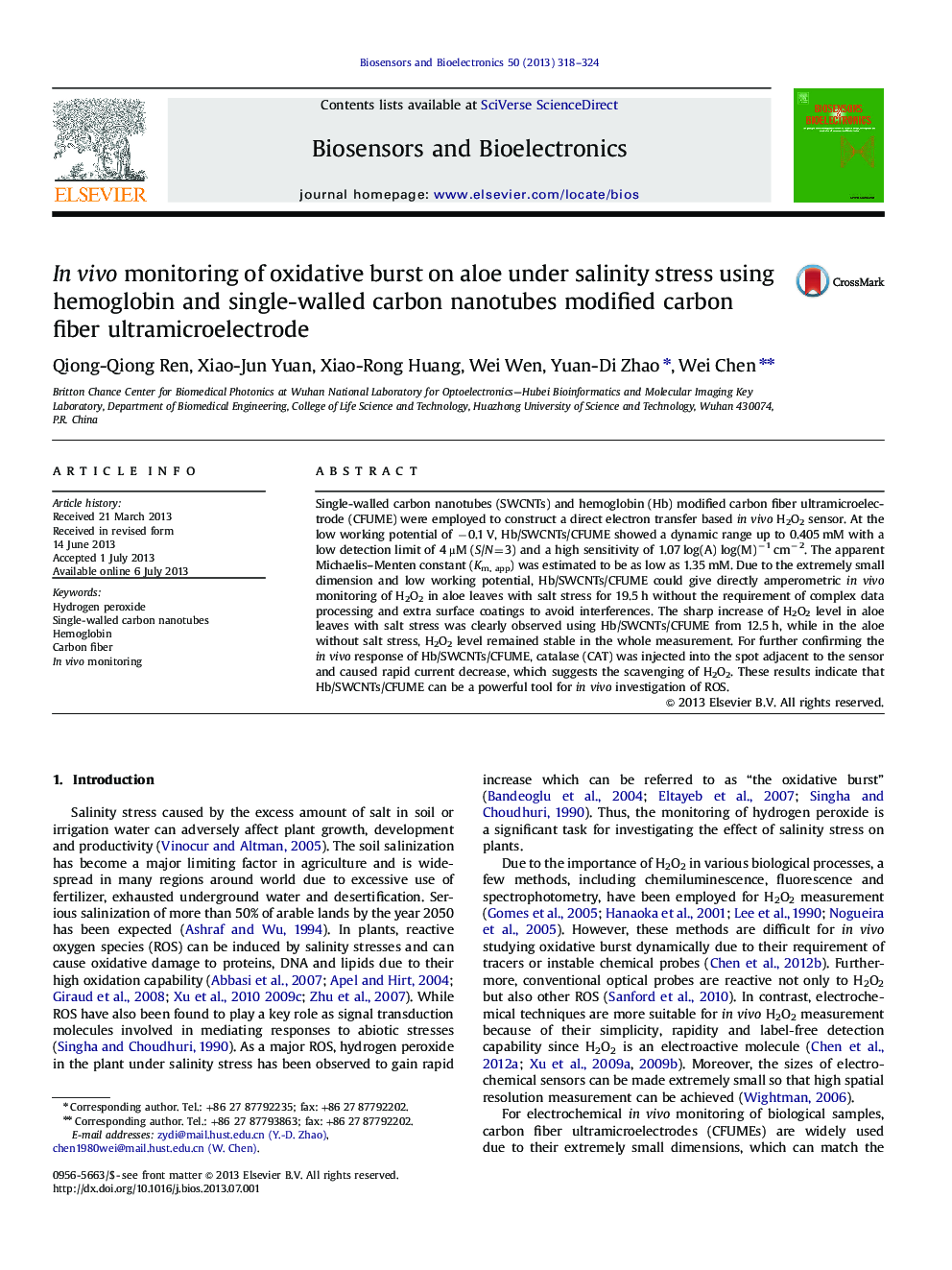| Article ID | Journal | Published Year | Pages | File Type |
|---|---|---|---|---|
| 7233950 | Biosensors and Bioelectronics | 2013 | 7 Pages |
Abstract
Single-walled carbon nanotubes (SWCNTs) and hemoglobin (Hb) modified carbon fiber ultramicroelectrode (CFUME) were employed to construct a direct electron transfer based in vivo H2O2 sensor. At the low working potential of â0.1 V, Hb/SWCNTs/CFUME showed a dynamic range up to 0.405 mM with a low detection limit of 4 μM (S/N=3) and a high sensitivity of 1.07 log(A) log(M)â1 cmâ2. The apparent Michaelis-Menten constant (Km, app) was estimated to be as low as 1.35 mM. Due to the extremely small dimension and low working potential, Hb/SWCNTs/CFUME could give directly amperometric in vivo monitoring of H2O2 in aloe leaves with salt stress for 19.5 h without the requirement of complex data processing and extra surface coatings to avoid interferences. The sharp increase of H2O2 level in aloe leaves with salt stress was clearly observed using Hb/SWCNTs/CFUME from 12.5 h, while in the aloe without salt stress, H2O2 level remained stable in the whole measurement. For further confirming the in vivo response of Hb/SWCNTs/CFUME, catalase (CAT) was injected into the spot adjacent to the sensor and caused rapid current decrease, which suggests the scavenging of H2O2. These results indicate that Hb/SWCNTs/CFUME can be a powerful tool for in vivo investigation of ROS.
Related Topics
Physical Sciences and Engineering
Chemistry
Analytical Chemistry
Authors
Qiong-Qiong Ren, Xiao-Jun Yuan, Xiao-Rong Huang, Wei Wen, Yuan-Di Zhao, Wei Chen,
